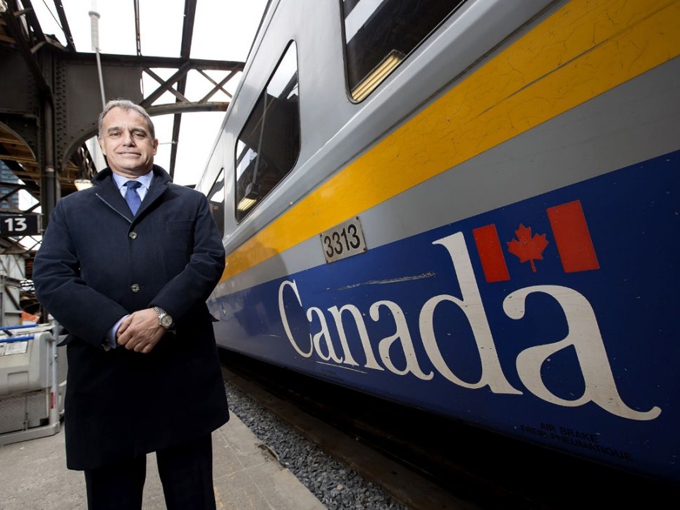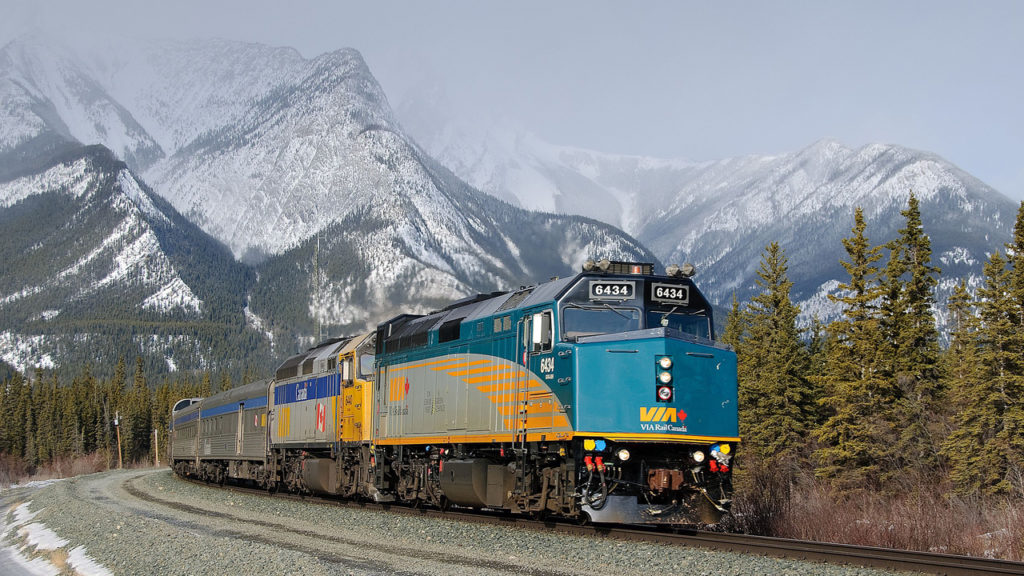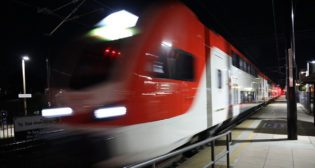
Canada Commits to Passenger Rail Revival With HFR Certainty
Written by David Thomas, Canadian Contributing Editor
In September 2021, VIA Rail Canada took delivery of the first of 32 new Siemens trainsets, and on Nov. 30, revealed it to the public; testing started in December. (Photograph Courtesy of VIA Rail Canada)
Canada’s public passenger railway VIA Rail has been pulled back from pandemic-induced oblivion by a federal government now framing the scheme for a dedicated, electrified right-of-way linking Quebec City and Toronto as a certainty for the first time since the project was first revealed in 2015.
“High Frequency Rail (HFR) will transform passenger rail service in Canada through the creation of a faster, more frequent, more accessible and more sustainable rail service among the major centers of Québec City, Trois-Rivières, Montréal, Ottawa, Peterborough and Toronto,” Transport Canada declared March 9.

VIA Rail’s single shareholder thus invited the global passenger rail industry to submit ideas for private-sector participation in the provision of train services over the eventual network to be woven from strands of abandoned 19th century routes and still-operating branch-line freight trackage. Private-public partnerships were part of the original concept unveiled to Railway Age in 2015 by then CEO Yves Desjardins-Siciliano. The Montreal lawyer became Canadian CEO of Siemens Mobility in 2020.
Siemens won a separate contract in 2018 to modernize VIA Rail’s existing “Corridor” service and the first trainsets have been delivered for testing along the Quebec City to Windsor trackages over which VIA Rail rents running rights from CN. VIA owns outright the portion of the route from Coteau, QC west of Montreal to Ottawa and Brockville, ON where it rejoins CN.
For the first time, Transport Canada declared that the new dedicated Corridor line would be electrified. This did seem inevitable given Quebec’s abundant and renewable hydroelectricity and VIA Rail’s specification of dual-power locomotives for the 32 new trainsets to replace its current museum-grade Corridor fleet.
“Many key benefits would be provided to travelers through an electrified High Frequency Rail system, including shorter travel times and faster trains, improved on-time performance, higher frequencies, and more direct routes with improved connectivity between cities and to other modes of transportation,” said Annie Koutrakis, Parliamentary Secretary to Transportation Minister Omar Alghabra.
The minister himself declared: “High Frequency Rail is a transformational project that promises to fundamentally change the way Canadians travel in southern Ontario and Quebec, improving accessibility, and providing more travel flexibility. The Request for Expressions of Interest marks the first major step in the development and advancement of this project.”
Interested providers were advised that participation of Canada’s Indigenous Peoples would be a key factor in the evaluation of their conceptual proposals. Transport Canada said HFR Corridor service could be operational in the early 2030s.
Opposition to any full or partial privatization of VIA Rail was promised by Unifor, the union representing VIA Rail’s 2,000 maintenance workers, on-board service personnel, chefs, sales agents and customer service staff.

For more on VIA Rail, read: “For VIA Rail, an Existential Crisis.”



